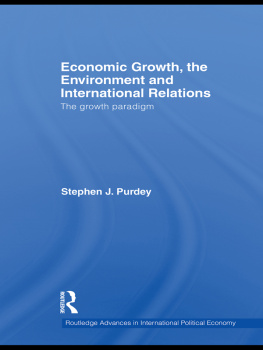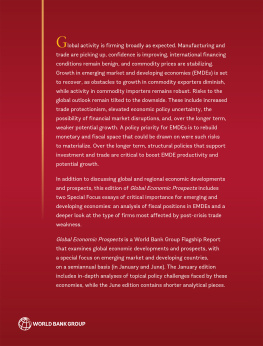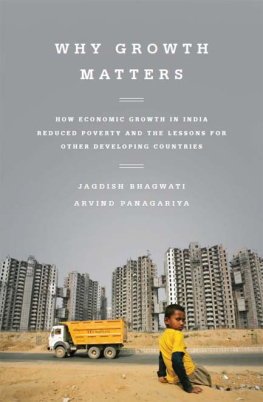In 1999, I completed nine years as Dean of the Graduate School of Business of Stanford University, ending fifteen years of academic administration, the preceding six as the Dean of the Faculty of Arts and Sciences at Harvard. It was a wonderful period in my professional life, one I would not have given up, even with the knowledge that hindsight brings of the rewards, challenges, and petty tribulations. I learned a great deal about management and implementation, about organizations, incentives, and motivation. Though this was not the purpose, I think it has made me a better older economist.
But the truth is that fifteen years is a long time, long enough to drift fairly far away from the day-to-day debates in economics. Some colleagues have referred to me as a former economist, causing me to wince a little, even if there was an element of truth in it.
Prior to academic administration, I would have been described as an applied microeconomic theorist, with an interest in the details of market structure and performance and a special interest in the information structures in marketsmarkets where there are informational gaps and asymmetries that affect market performance. Market functioning and performance in the presence of informational gaps had been the focus of my doctoral work. The work on market signaling was an attempt to assess how markets would try to close informational gaps, and it was recognized by the Nobel Prize in Economics in 2001, in the excellent company of George Akerlof and Joseph Stiglitz. One can think of market signaling as being an attempt to understand how sellers of high-quality products send credible signals to potential buyers in a market environment in which the buyers do not have the quality information separate from the functioning of the market and the embedded signaling.
In 1999, when I stepped back from academic administration, Internet mania was in full bloom. The potential of the Internet and the World Wide Web to have a major impact on markets, industries, and indeed whole economies was starting to come into focus. The Internet bubble in the stock markets and in venture capital was under way and inflating rapidly. Companies were being formed and financed in some cases without even a hint of where the revenues, let alone profits, were going to come from. Venture capital flowed like water from a decapitated fire hydrant. Companies went public early in their life cycle and traded at values determined largely by day traders, many of whom could not describe the business of the company or its products except in the vaguest of terms. It was uncharted territory with little historical data to constrain the expectations and enthusiasm, at least for a while. Then reality set in, revenues and profits in many cases did not materialize, and of course the period of overvaluation came to an end, as so often happens, with startling rapidity.
The fact that there was a bubble and then a burst bubble led some to conclude that there was nothing there in the first place. That was not and is not right. Overvaluation does not imply the absence of fundamental change. Often it is associated with an overestimate of the speed of change. It seems clear that in this case, the principal mistake lay not in forecasting huge impacts on economic systems and processes, but rather in overestimating the pace of adoption.
This gap between the potential of an innovation and its widespread adoption is one of those lessons that we learn and then tend to forget, or we dont learn it because of inattention to history and its lessons about human and organizational behavior.
As I thought about the potential uses of the Internet, it started to become clear that the informational structures in markets, supply chains, and transaction systemsindeed, the whole global economywere set for a fundamental and permanent shift. With a background in this part of economics, I decided to set out to try to make sense of what all this meant for the functioning of markets and economies. I talk about that in Part IV. Information technology is one of the most powerful forces now affecting growth and the distribution of economic activity in the global economy.
The information layer that surrounds, organizes, and governs the real economy and all its parts is gravitating to the Internet; that is, to networks of computers and people. Time and distance and cost are compressed in the information layer. Many of the costs associated with being remote, from markets and head offices, were expected to decline with this new technology, and in fact they are declining rapidly.
I asked myself the question, Where is the largest long-run impact of the technology surrounding the Internet likely to occur? Once you note that time and distance and related costs are compressed, and that remoteness loses some of its significance, the answer seems obvious: the big impact is likely to be in international markets, global supply chains, in access to information and services in places that have been remote from themin short, in the global economy, and especially in the developing countries.
As I embarked on this line of inquiry, an unexpected call came from the World Bank asking if I would deliver a keynote lecture in 2005 at the principal annual conference held by the Poverty Reduction and Economic Management Network in the Bank. The proposed subject was growth in the developing world. Now, I thought to myself, it is true that, in light of the route just outlined, I am interested in this. But giving a lecture on the subject in an institution with several thousand of the worlds most knowledgeable people on the subject of development struck me as slightly risky. I voiced this doubt. The response I got was that new views from outsiders are sometimes useful, that I had a background in microeconomics and some experience with investment, and that growth as an essential enabler of poverty reduction and progress had experienced a period of underemphasis.
I wasnt entirely persuaded, but resorting to my past, I thought if it goes badly, it will be a useful signal and I can move on. And if it doesnt go badly, that signal will be useful too.
I enjoyed it, seemed not to bomb, and, to cut a long story short, after some discussion in partnership with the World Bank and a number of other sponsors, we decided to ask a group of distinguished political and policy leaders from developing countries to join a commission focused on growth: on learning from their experience and that of others in multiple countries and from academic research. The goal was to deliver the results of this learning process over the past fifteen years back in a form that provided useful guidance to their counterparts, leaders in developing countries, and to the next generation of leadership.
Forming the commission would itself be a screening device. If the distinguished leaders whom we asked said no, we planned to conclude it was probably not a useful exercise at this stage and to drop the project. But they didnt say no, and we launched the Commission on Growth and Development (CGD) in the spring of 2006. Its work concluded in June of 2010. The written work product can be found on the archived website of the CGD.
Interacting with these developing-country leaders, their colleagues, and literally hundreds of my academic colleagues was the experience of a lifetimefor me, a high-speed learning process that was, to say the least, exhilarating and humbling. I learned about growth and development, about complexity, pragmatism, and persistence, and about leadership. For an economist trained in an advanced economy, it was startling to see how incomplete and imperfect were the frameworks and models available to guide policy choices in developing countries. It was even more startling to see how effectively the developing countries navigated this sea of complexity and uncertainty. I came to see the process as akin to a long sea voyage undertaken with incomplete and sometimes contradictory charts, not unlike the early explorers who set out to discover, explore, and map the contours of the planet and to exploit its resources.







